June 3, 2016
Tokyo Digs a Garden, by Jon-Erik Lappano and Kellen Hatanaka
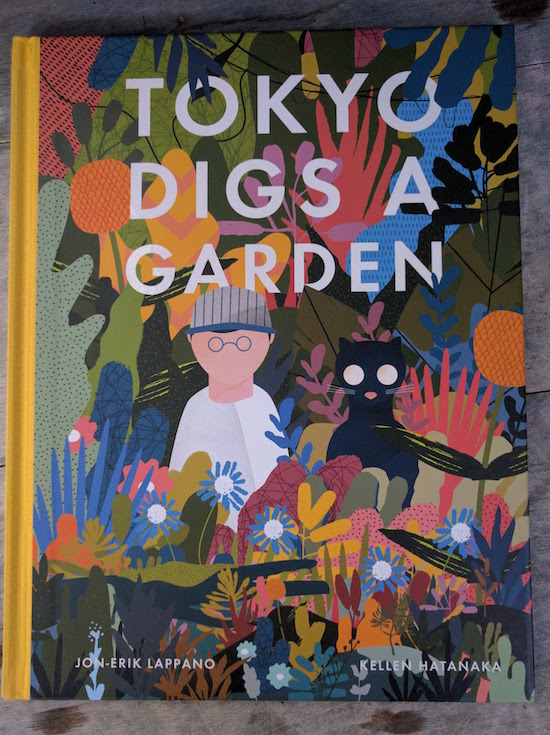
Tokyo Digs a Garden, by Jon-Erik Lappano and Kellen Hatanaka, doesn’t really make sense. It’s about a boy called Tokyo who has a cat called Kevin (who has vivid dreams about ice cream trucks). That it’s about a boy called Tokyo gives one a sense that the story takes place in Japan, and this is suggested by the illustrations, which are by Hatanaka, whose ethic origin is presumably Japanese. But then really, I’m not sure this is a story that takes place anywhere that’s literal. In fact, as suggested by a plot point hinging on a mysterious old lady distributing magic seeds, I’d say that Tokyo Digs a Garden is most certainly a fairy tale. And coupling such an old-fashioned form of story with a contemporary setting (cars, and elevators, and like) and Hatanaka’s new-fashioned illustrations shouldn’t necessarily work, but it totally does, resulting in an effect that is fantastic, weird, deep and textured, and, most wonderfully, a story for story’s sake.
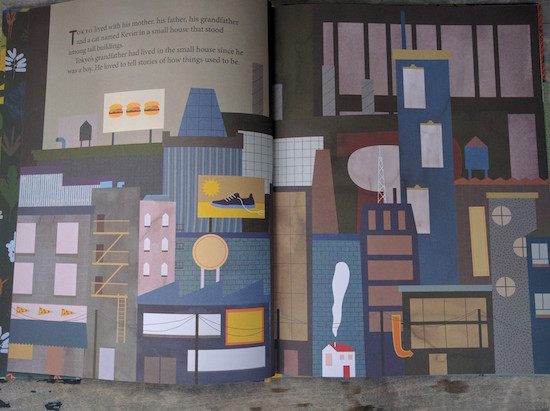
See the small white house with the red roof? That’s Tokyo’s house, and once that house was in the middle of a lush and verdant countryside, but then the city had eaten it all up.
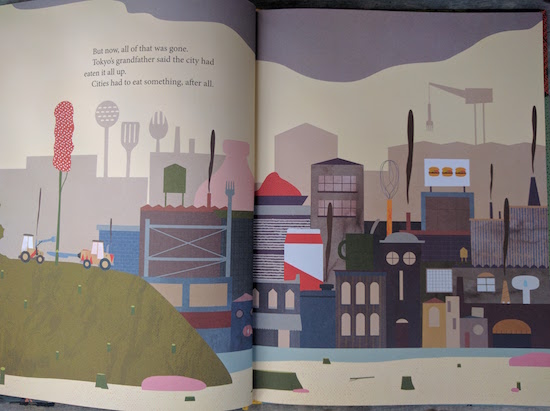
“City’s had to eat something after all,” Tokyo’s grandfather tells him, Hatanaka’s whimsical illustration playing with this idea, the city built of whisks and knives and forks and crockery and spatulas—and it’s a cityscape that reminds me of Maurice Sendak’s in The Night Kitchen.

One day Tokyo and Kevin hear an ice cream truck and rush outside, only to discover no truck and no ice cream, but a very old woman riding a bicycle pulling a cart that’s filled with dirt. The cat’s disappointed, but Tokyo is intrigued to receive three seeds from the woman who tells him to plant them and the seeds will grow into whatever he wishes.
The next day, his grandfather informs him, is a good day for planting, and so Tokyo goes into his backyard (“where nothing is growing. Not even a weed”) and find a small patch of soil when he turns over a brick. He plants the three seeds and we don’t learn what he wishes, but that night he dreams he is a fox running through a forest. Kevin dreams of ice cream.
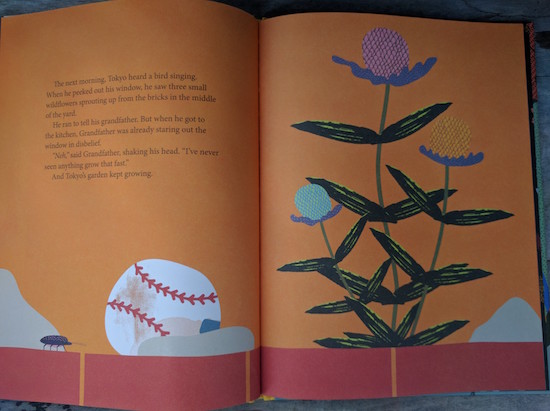
These are no ordinary seeds, of course, but you already knew that. The next morning wildflowers have sprung up between the cracks in the bricks. By the end of the day, there were trees, and by the next morning, “the garden had grown up and over the buildings, across the street, down the road, over the cards, and into the expressway.”
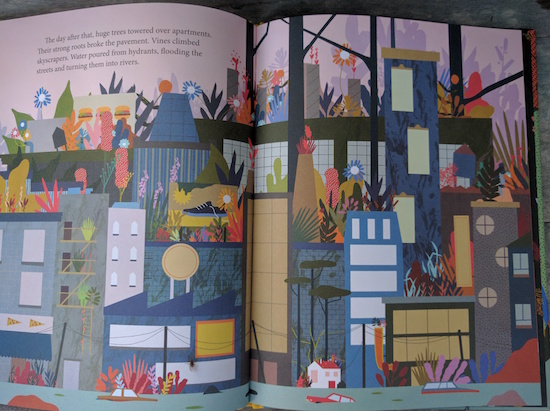
The wilderness grows and grows until vines climb the skyscrapers, roots are breaking the pavement, and the roads are rivers. “The day after that, the city was completely wild. / Deer foraged in office lobbies./ Rabbits burrowed in library carpets./ Bison stampeded through traffic lights./ Bears climbed telephone poles to search for honey where bees had made their hives.”
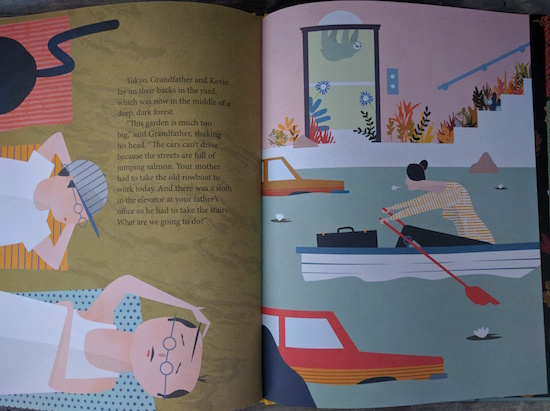 Underlying this, if one searches, there is some kind of environmental message: about the impact of humans on the environment, about extreme conditions caused by climate change, about the force of wilderness and wildness (which is already apparent in our neighbourhood in early June, as everything has turned so drastically GREEN and the weeds are already exploding) and how we think we are agents of this earth when we are in fact very much just a part of it. A small part. What I like about these ideas is that I’m not sure what the message is exactly—the searching is the point. Tokyo Digs a Garden is not an allegory. There are sloths in the elevator, which I don’t think is supposed to stand for anything but the sloth itself. There is no moral: “I think we’re just going to get used to it,” says Tokyo. “Gardens have to grow somewhere, after all.”
Underlying this, if one searches, there is some kind of environmental message: about the impact of humans on the environment, about extreme conditions caused by climate change, about the force of wilderness and wildness (which is already apparent in our neighbourhood in early June, as everything has turned so drastically GREEN and the weeds are already exploding) and how we think we are agents of this earth when we are in fact very much just a part of it. A small part. What I like about these ideas is that I’m not sure what the message is exactly—the searching is the point. Tokyo Digs a Garden is not an allegory. There are sloths in the elevator, which I don’t think is supposed to stand for anything but the sloth itself. There is no moral: “I think we’re just going to get used to it,” says Tokyo. “Gardens have to grow somewhere, after all.”





